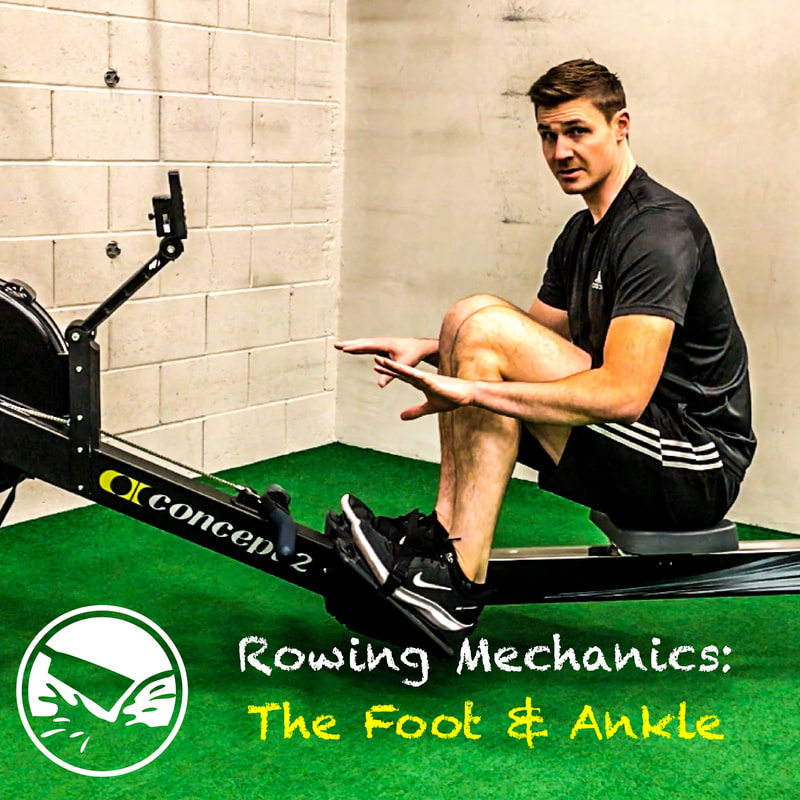It's the motion at our foot and ankle that allows us to load our whole backside. Motions of the Foot & AnkleWith each step, stride, or stroke, the foot and ankle move in predetermined ways. It's the motion at our foot and ankle that allows us to load our whole backside. These movements include: The foot pulls up (dorsiflexion of the ankle) The foot points down (plantarflexion of the ankle) The foot rolls in (inversion of the ankle) The foot rolls out (eversion of the ankle) The big toe pulls up (dorsiflexion of the big toe) The bone above the big toe pushes down (plantarflexion of the 1st ray) The bone above the big toe pulls up (dorsiflexion of the 1st ray) If any one of these 7 motions is limited it will affect the way we move, and in turn the way we row. Mechanics of the Rowing StrokeHow do these motions translate to the rowing stroke? Motions of the Recovery: As I pull up into my catch my foot pulls up (dorsiflexion of the ankle). What is hard to see, but important, is that our foot also slightly rolls out (eversion of the ankle). We then roll over our big toe (dorsiflexion of the big toe), and the bone above the big toe slides down (plantarflexion of the 1st ray). All of these slight motions load my whole backside like one big system. Motions of the Drive: As we press into our drive, our ankles point down (plantarflexion of the ankle) and our foot slightly rolls in (inversion). The big toe pushes down (plantarflexion of the big toe), and the bone above the big toe slides up (dorsiflexion of the 1st ray) Watch how hereWhy does this matter?These movements, when unobstructed, load our whole backside like one giant system. On the recovery we load the system. On the drive we release the energy. Although these movements may seem slight and insignificant, they connect our whole body as one. They have the potential to dramatically affect our mechanics and loading patterns. According to Dr. Emily Splichal, when the subtalar joint (the joint responsible for inversion and eversion) is properly loaded it's able to generate up to 8x body weight in elastic forces. Get to work on those little buggers
0 Comments
Leave a Reply. |
Author
Blake Gourley holds a Masters of Science in Sports Performance Training and has over 12+ years of experience working with rowers. Read more Categories
All
Archives
August 2023
|

 RSS Feed
RSS Feed